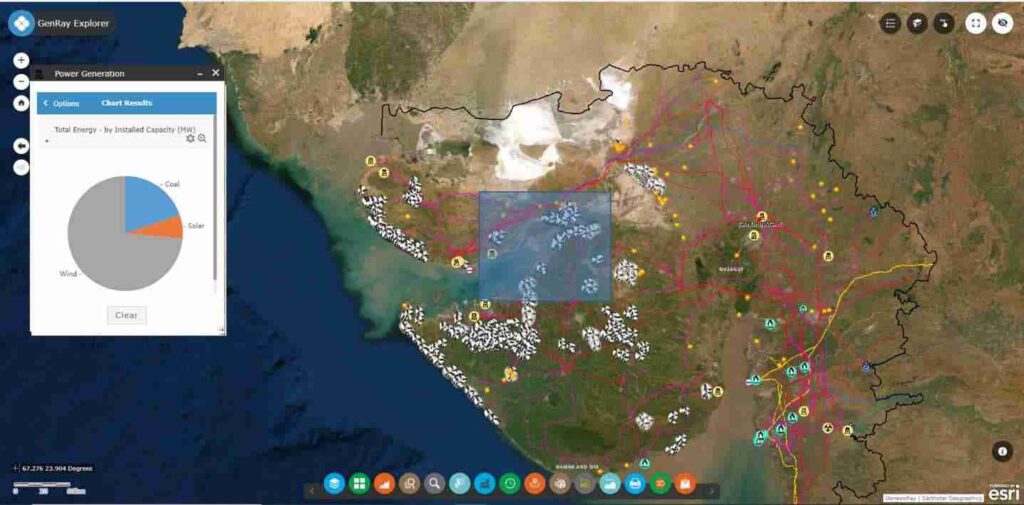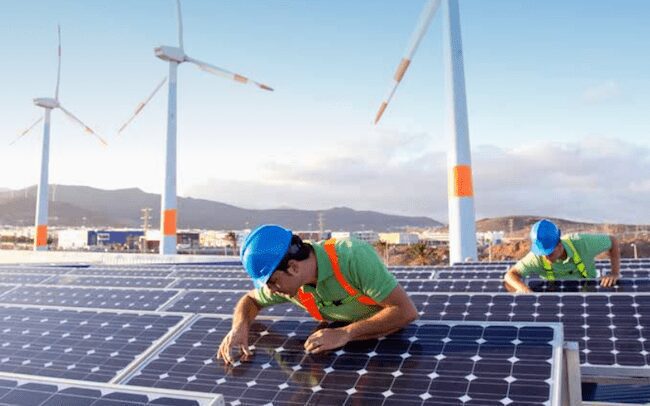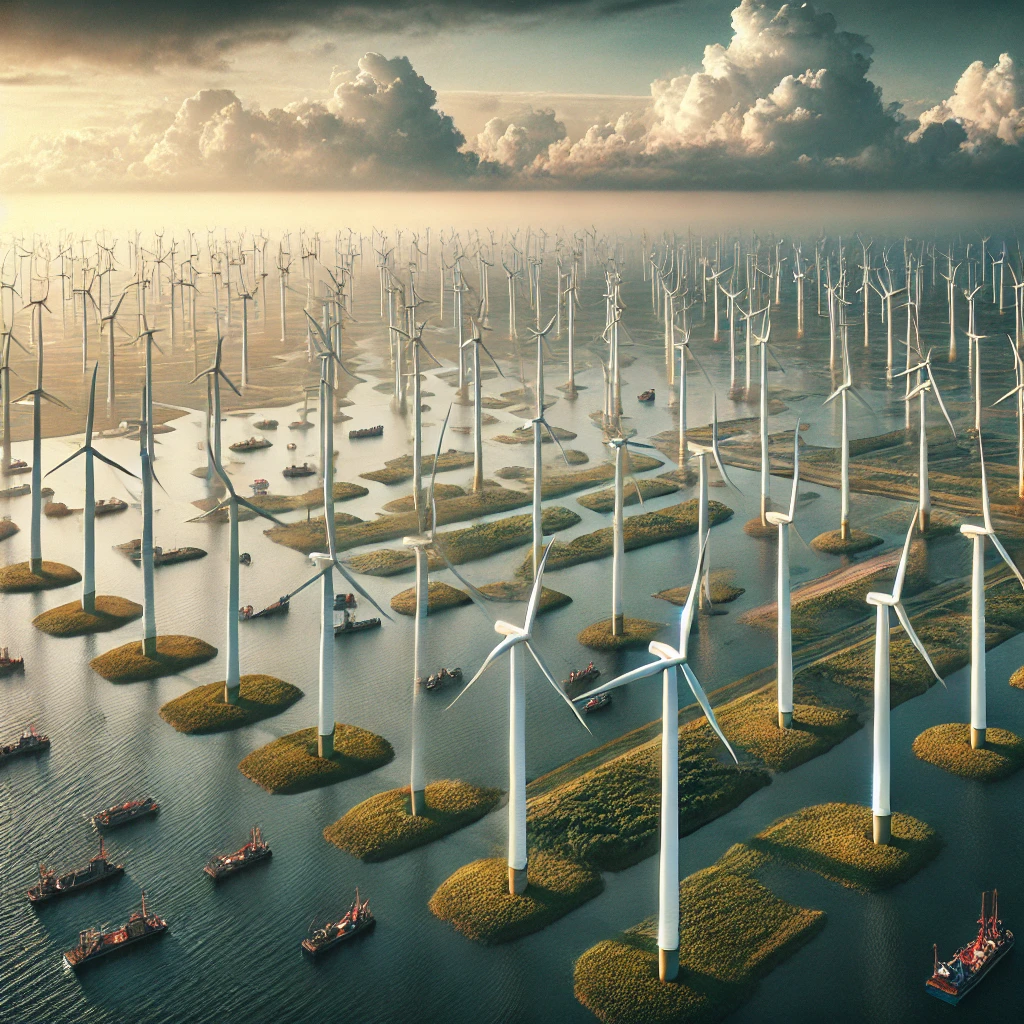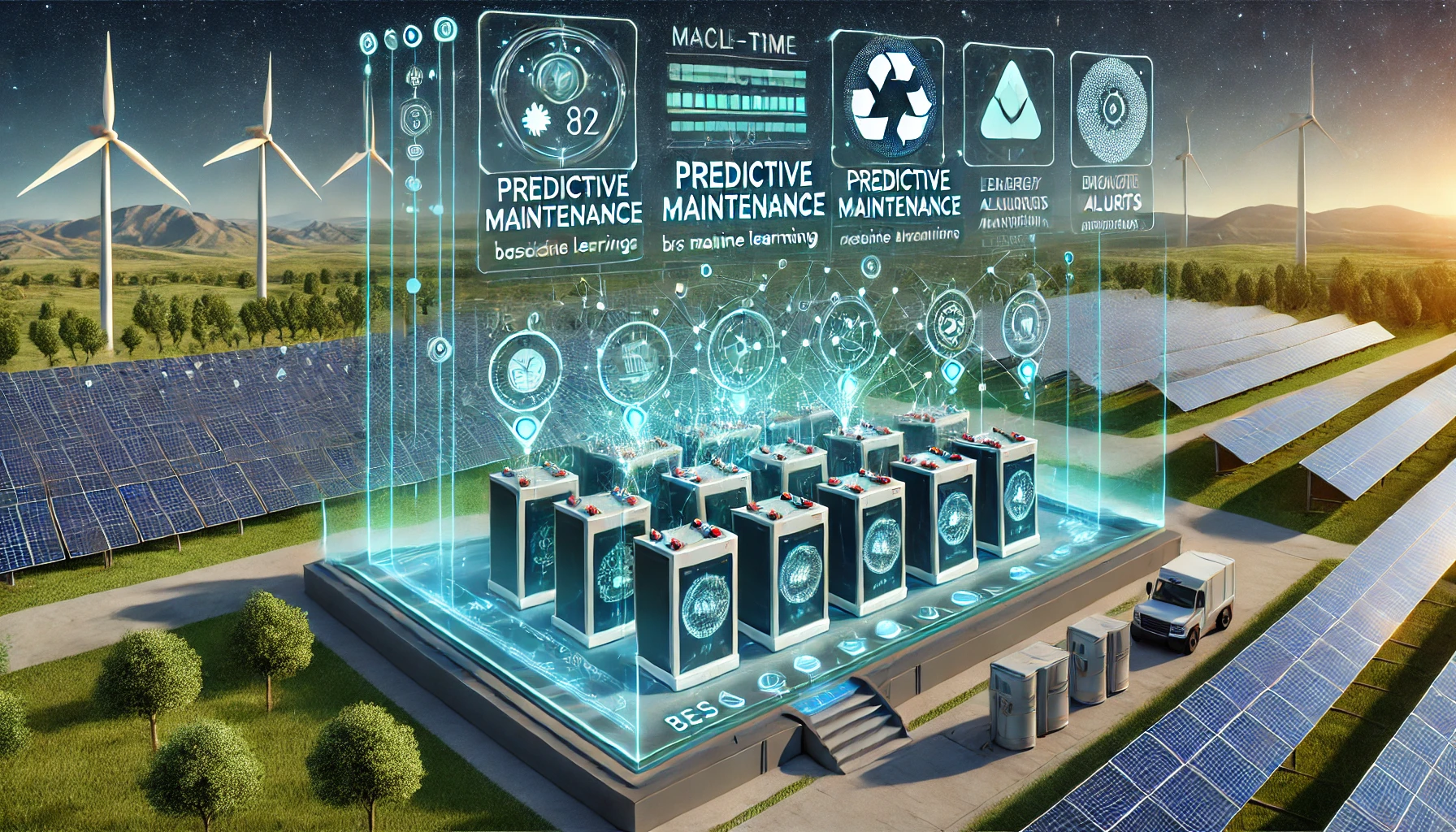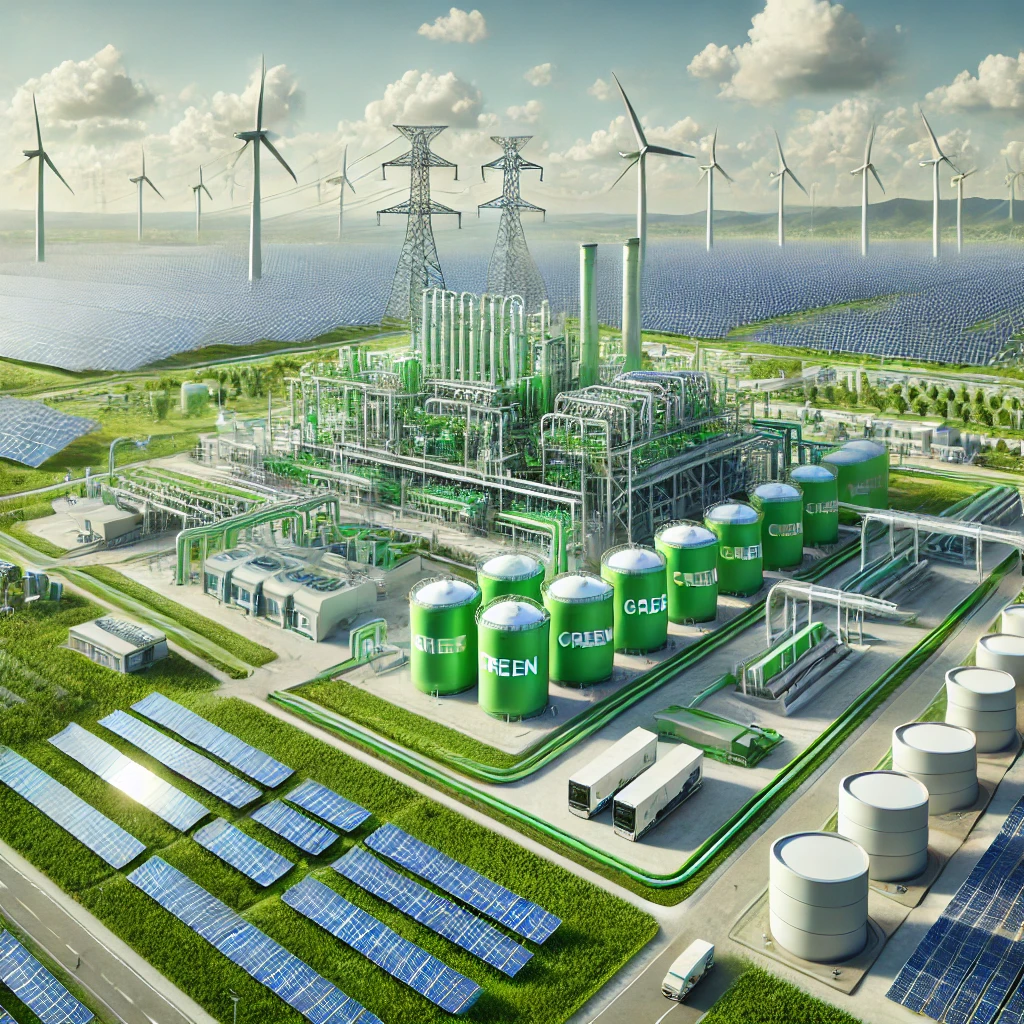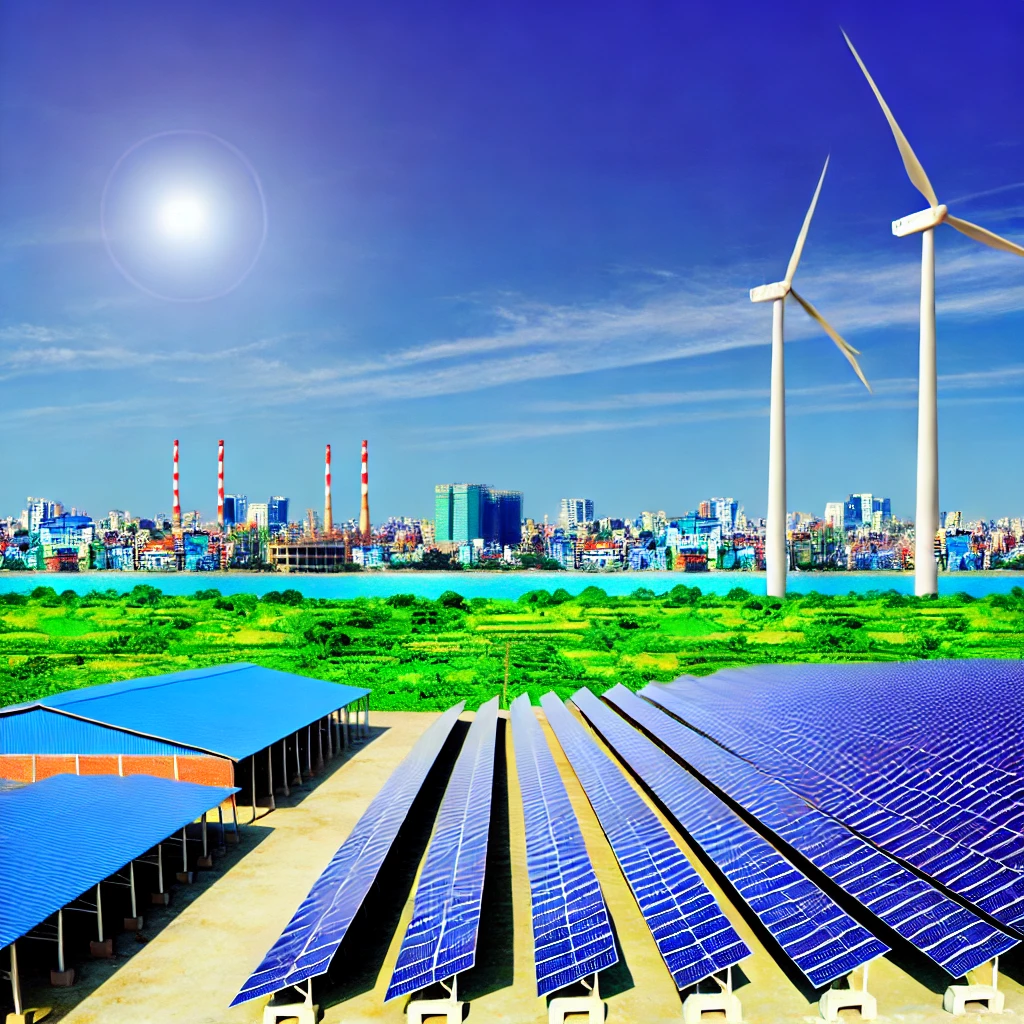Gujarat ranks as the sixth largest state in India by area and the ninth by population, with over 60 million residents. Renowned for its prosperity and effective governance, Gujarat is a leader in India’s energy sector, particularly notable for providing round-the-clock electricity to both urban and rural areas.
The state also stands out in the renewable energy sector, outpacing other states with a significant contribution of 13% to India’s renewable energy portfolio, which includes more than 10 GW of renewable capacity. Additionally, Gujarat leads the nation in solar rooftop installations, with renewables comprising nearly 37% of its total energy capacity.
Gujarat as an Emerging Renewable Hub
As of June 2021, Gujarat’s total installed capacity from renewable sources—solar, wind, hydropower, biomass, and bagasse—reached approximately 13,152 MW. Wind energy alone accounts for more than 70% of this capacity. The state’s success in renewables is attributed to progressive policies filled with incentives, an investor-friendly climate, effective governance, and strategic planning. Moreover, Gujarat offers advantageous policies, concessional benefits, efficient evacuation systems, and a transparent electronic bidding process.
Gujarat has achieved several firsts, including the announcement of a 30 GW solar-wind hybrid park on wasteland. With ambitious targets to exceed 15,000 MW by 2022 and 60,000 MW by 2030, Gujarat is poised for significant growth in the renewable energy sector in the near future.
On April 1, 2005, the State initiated structural reforms that led to the restructuring of the Gujarat Electricity Board (GEB) into distinct entities. This reorganization resulted in the formation of several separate companies including the Gujarat State Electricity Corporation Limited (GSECL) for power generation, along with Gujarat Energy Transmission and four state distribution companies (discoms) for distribution tasks. GSECL currently manages an installed capacity of 6.8 GW, comprising four coal-based plants, two gas plants, two lignite plants, and two hydro plants. Additionally, GSECL has ventured into renewable energy with 10 MW of wind power and 89 MW of solar projects.
GSECL has a total installed capacity of 6.8 GW, which includes four coal-based plants, two gas plants, two lignite plants, and two hydro plants. In addition to these, the corporation also operates 10 MW of wind energy projects and 89 MW of solar projects.
A part of the reforms, Gujarat Electricity Regulatory Commission was also formed to regulate the state electricity sector. Some of the main policies in the state include:
- Solar Policy (2015)
- Wind Policy (2016)
- Gujarat Small Hydel Policy (2016)
- Waste-to-energy Poicy 2016
- Net Metering Regulations for Rooftop Solar (2016)
- State for Rooftop Solar (2016)
- Net Metering Regulations for Rooftop Solar (2016)
- Net Metering Regulations for Rooftop Solar (2016)
- Wind Solar Hybrid Policy (2018)
Renewable Energy Capacity Expansion
Gujarat is adopting diverse strategies for renewable energy (RE) capacity expansion. This includes competitive bidding and rooftop solar installations. Additionally, state government initiatives are promoting RE growth, such as solar projects adjacent to GETCO substations, the Suryashakti Kisan Yojana scheme, the solarisation of Modhera’s sun temple, and the transformation of Gandhinagar into a solar city.
Upcoming Projects
The state is launching several major projects to enhance its renewable energy production. In December last year, Prime Minister Narendra Modi laid the foundation stone for a hybrid solar and wind energy park in Kutch, which, at 30,000 MW, is set to be the largest in the world. Covering 72,600 hectares, the park is larger than some of the cities in India and is expected to draw an investment of Rs 1.5 trillion. Located along the India-Pakistan border, the project will also likely bolster border security. This park is set to lower per capita carbon emissions and generate significant employment.
Moreover, four power distribution companies under Gujarat Urja Vikas Nigam Ltd (GUVNL) have recently entered into power-purchase agreements (PPAs) for 3,979 small-scale solar projects, with a cumulative capacity of 2,500 MW. These projects are slated to commence within the next 18 months and are anticipated to attract Rs 100 billion in investment in the green energy sector.
Gujarat is also seeing the development of numerous RE projects through competitive bidding, including ultra-mega solar parks and smaller non-park setups. Notable solar energy parks are under development in Dholera near Ahmedabad, and Raghanesda and Harshad in Banaskantha. Additionally, the Solar Energy Corporation of India has auctioned various solar and wind energy projects in the state.
RIL’s Strategic Move into Renewable Energy
Reliance Industries Limited (RIL), a leading Indian conglomerate, is making a significant foray into the RE sector, focusing on both generation and equipment manufacturing. RIL plans to establish 100 GW of solar energy by 2030. The company has also announced the creation of a 5,000-acre Dhirubhai Ambani Green Energy Giga Complex in Jamnagar, which will house four giga factories dedicated to producing solar photovoltaic modules, energy storage batteries, fuel cells, and electrolysers. Over the next three years, RIL will channel Rs 600 billion into these projects and an additional Rs 150 billion to develop infrastructure and utilities for manufacturing support materials and equipment for these factories.
Gujarat’s Renewable Surge: Present & Future Planning
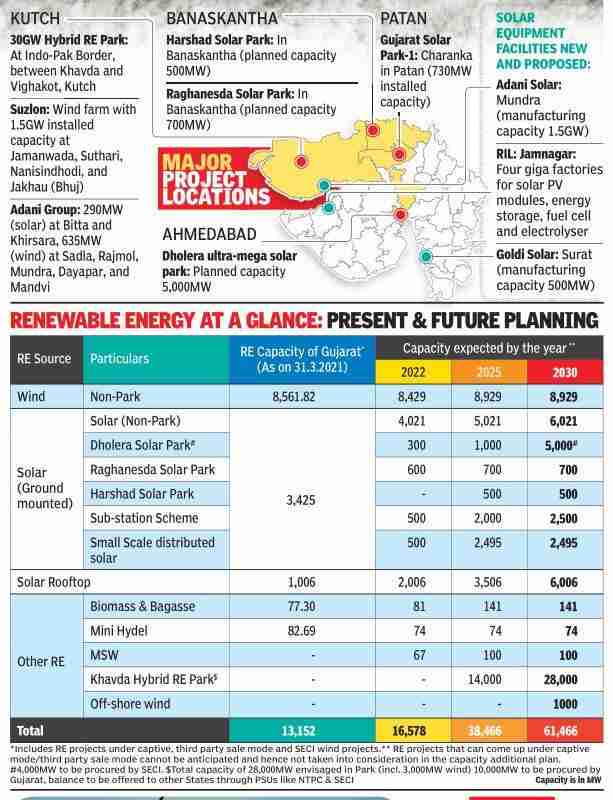
Gujarat as a Renewable Energy Manufacturing Hub
Gujarat is solidifying its position as a hub for renewable energy (RE) manufacturing. Leading the charge is Adani Solar, India’s largest solar cell and module manufacturer, which is expanding its capacity from 1.5 GW to 3.5 GW. Additionally, other companies like Surat-based Goldi Power are also ramping up their production capacities.
WhereSciences GeoSpatial Labs Introduces GIS Solutions for Gujarat
WhereSciences GeoSpatial Labs Energy, a company specializing in GIS-based energy data and analytics, has launched a special promotion offering a free “limited period” subscription to its GIS-based tool. This tool, known as GenRay EXPLORER™, encompasses a wide range of energy assets, including coal, wind, and solar projects, as well as gas pipelines. It is now accessible for no cost on the WhereSciences GeoSpatial Labs website at www.wheresciences.com.
This initiative allows users to view, scan, and assess energy assets across Gujarat through a desktop survey. The tool features geotagged energy assets on GIS maps, providing precise locations. Users can click on features like a wind turbine to view detailed information such as the turbine’s capacity, model number, hub height, commissioning date, owner, and manufacturer details. The tool facilitates comprehensive analysis of project-specific, technical, ownership, and location data through various widgets. Additionally, it offers the capability to retrieve high-resolution maps and three-dimensional views, and to create charts and infographics for detailed comparative studies and analysis.
The WhereSciences GeoSpatial Labs tool has recently enhanced its capabilities by introducing two new features to its core product, thereby enhancing its users’ ability to make critical decisions. Its Site Suitability Module assists in the screening, analysis, and selection of sites for renewable energy projects. This feature is particularly valuable in the current context of Covid-19, where conducting extensive physical site surveys is challenging.
The Site Suitability tool allows users to perform desktop surveys of potential sites based on crucial factors such as land use, soil bearing capacity, proximity to transmission lines, access to infrastructure, topographical characteristics like slope, susceptibility to natural hazards, and details concerning exclusion zones. Additionally, a new Resource Module is being developed to assess the resource potential of wind or solar sites and to generate probabilistic generation profiles. These enhancements are providing substantial benefits to professionals in the energy sector, aiding them in making well-informed decisions without the need for on-site evaluations.
